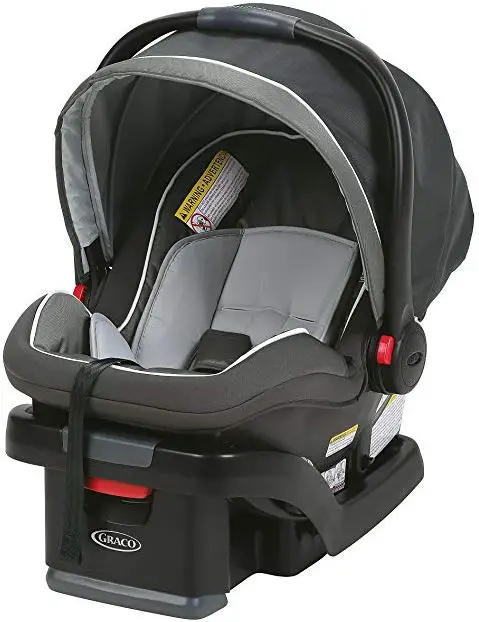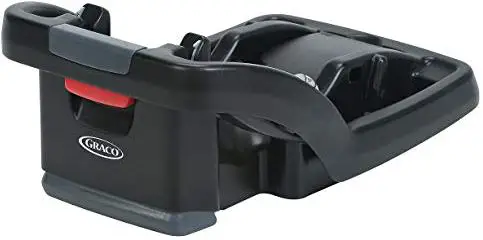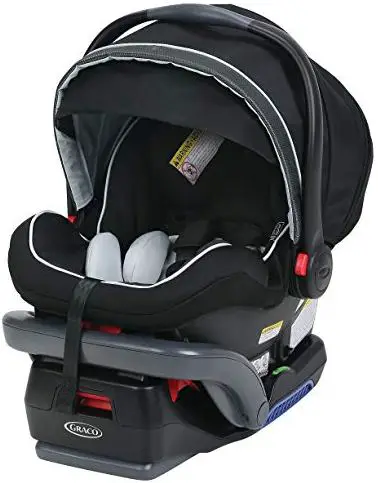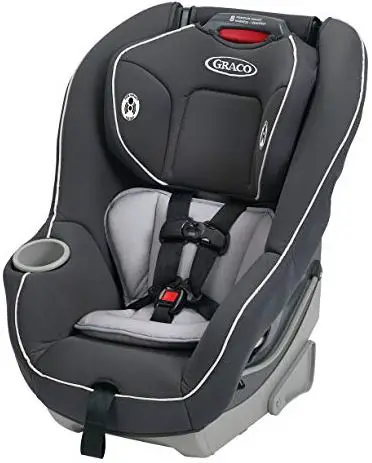Table of Contents
Graco has been creating baby products for over 60 years. Their product lines include strollers, play yards, bassinets, high chairs, swings, and car seats. While many of these products can be handed down over the years to siblings or cousins, the one product that needs to be replaced periodically is the car seat.
*This post may contain affiliate links. As an Amazon Associate we earn from qualifying purchases.
This safety device comes with a precise expiration date telling owners when the seat is no longer legal to use. The Graco car seat expiration date is either seven or ten years after initial production depending on the model.
Why Do Car Seats Have Expiration Dates?
[amazon box=”B079PM11WW”]
It is a well-known fact that food manufacturers put expiration dates on their products out of necessity, and because the law demands it. Food goes bad, and no one wants to eat expired food. Certain foods have a “sell by” or a “use by” date. The “sell by” date is the last day that the store can sell the food; the “use by” date lets consumers know approximately when the food may no longer be fit to eat. However, car seats only have a final expiration date to let the consumer know when they should stop using the car seat entirely.
Many consumers use food expiration dates without question, even if the food still looks, smells, or tastes fine. For instance, yogurt is created by allowing milk to sit in a warm environment that enables the added cultures to grow. Consequently, yogurt stays good for a few weeks after its expiration date, if it is unopened and kept properly refrigerated. Canned food is another product that has an expiration date.
However, the canning process kills bacteria extending the shelf life of the food for years, even beyond the expiration date on the can. People eagerly dispose of these products when they are past the expiration date. So why would people gladly abide by expiration dates on food products that are still edible, but not want to believe in the expiration dates on car seats? The answer may be in the perception of plastic as nearly indestructible.
Government agencies, recycling websites, scientists, and media outlets beg people to recycle plastic because of the 450 to 1000 years it takes plastic to decompose. In fact, plastic bags take ten times longer than plastic bottles to decay fully. Due to this seemly unending plastic life cycle, many people do not like to merely dispose of anything plastic, preferring instead to up cycle or recycle. So if a plastic bottle can last a minimum of 450 years, why do car seat manufacturers put an expiration date of six to ten years on them?
Since car seats are made out of a highly-sturdy, molded plastic, many people assume that this material is solid, unless exposed to extremes in weather, or has been damaged in some way, such as being in an accident. This is true to a point. A car seat will not suddenly be unsafe the day or month after the expiration date.
In fact, car seat manufacturers report that they do not see material degradation for at least ten years after production, barring any accidents. Even extremes in temperature, will not cause enough material fatigue to render the car seat inoperable suddenly. This means car seats that sit in unusually high temperatures created when a car is left out in the sun during the summer, or in the cold during the winter, will not start to degrade automatically. It would take years of constant exposure to the elements for this to happen. So why do we need expiration dates?
Changing Safety Features
The first car seats invented in the 1930s and 1940s were nothing more than restraints to prevent children from moving around the car, or allow for them to see out the window. They were not designed to keep children safe, just immobile. The first safety seats designed in the 1960s utilized seat belts along with a child seat, but overall safety features were lacking in these early attempts. Besides, the law did not require anyone to actually wear seat belts; purchasing these child seats were optional.
Government regulations of car seats began in the 1970s, and continued to evolve until the mid-1980s, when car seats and seat belts became mandatory. These early attempts lacked the safety features of current models, but it is also important to remember that the safety features from even a few years ago differ from models today. This is one main reason that car seats become obsolete and have expiration dates.
Cars also have evolving safety features. Years ago, cars did not have built-in child restraint systems, such as seat anchors, or built-in child safety seats. The car seats manufactured a few years ago, may not work with some of the features in the cars today. Older model car seats may still be usable, but can only be secured using the seat belt, whereas today, the seats utilize the seat anchoring mechanisms on each side of the car seat. There is usually one seat anchor in the rear to keep the car seat from lurching forward in the event of an accident.
Recalls and Replacement Parts
Car seat manufacturers change their designs every year to appeal to consumers, and to keep up to date with government safety regulations. Eventually, they stop making specific models, which then means that the replacement parts cannot be found. Webbing, straps, buckles, and other parts of the seat wear out or break, and cannot be replaced.
Over time, design flaws may be found in certain models, which will also mean the seat is discontinued, and can no longer be used. Additionally, according to government regulations, any child product deemed unsafe and recalled, can no longer be legally sold.
Accidents and the Law
Any child car seat involved in an accident must be replaced. The safety of the seat can no longer be assured. As the seat ages, the history and safety of the seat can no longer be guaranteed either. Unless you can be certain that an older car seat has not been in an accident, you may not want to risk putting your child in that seat to save a few dollars.
Car Seat Expiration Dates
The Graco car seat expiration date can be found in one of two places: back or bottom. The declaration is clearly labeled to avoid any confusion. Another place to find the expiration date is the owner’s manual. If you have lost this, or received the item second hand, then you can also call the car seat manufacturer. By providing them with the serial number, the company can tell you if the seat has any recall notices, or if it is out of date.
Product Registration
Once you purchase or receive a car seat, you should immediately register it with the manufacturer, even if it is an older model. The registration process helps the company track car seats and allows them to send you any relevant information, such as recall notices.
You can find the model or the serial number of the seat on the back, or bottom near the expiration date. You can then register the seat by calling or emailing the information to the company. If you have the product registration postcard, then fill that out and send it in.
Car Seat Disposal
To properly dispose of a car seat, you need to remove or cut the straps, take off the car seat cover, and unscrew any metal pieces. By doing this, you make it difficult for people to get replacement parts, and thereby prevent someone else from using the seat once it is expired. Once all of the pieces have been removed, you should write the word “expired” on the front and back with a permanent marker. Finally, you will want to recycle the seat and metal pieces, or put it in a trash bag for garbage pickup.
Some retailers that focus on baby equipment have yearly events to collect expired car seats and give you a discount on a new one. Check with your local retailers to find out when they have these events. You can also call your local recycler to find out if they take that type of plastic. If you cannot recycle the car seat, then you will have to put it out for a trash pick up.
Wrap up
Car seat expiration dates seem to cause unnecessary waste of perfectly good and expensive pieces of child safety equipment; after all, pack-n-plays and swing sets do not have expiration dates. People seem to hold on to those for generations. However, the rear facing and front facing car seats are designed to protect your child in case of an accident.
The Graco car seat expiration date is provided by the company to ensure your child’s safety, since the history of old car seats cannot be known or guaranteed. The expiration date ensures that the company’s liability is handled. Should you willingly and intentionally use a car seat beyond the expiration date, the company cannot be held responsible.
Other reasons for expiration dates include lack of available parts, safety standard increases, and new safety features. In the long run, it is better to keep security in mind and abide by the printed expiration date on a car seat.









